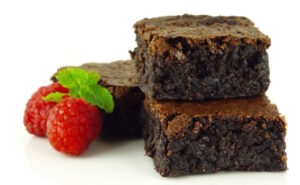Have you seen the letters GF on food products and restaurant menus? You may know that the letters GF stand for Gluten-Free. However, the true meaning behind those letters can be elusive.
Is it just another snooty diet that makes a waiter’s life more difficult? No.
There will always be individuals who are just looking to jump on the next fad bandwagon, but for some people, gluten wreaks havoc on their bodies, and this diet is an opportunity for better health.
The word gluten is derived from the word glue. Gluten is comprised of two proteins that provide elasticity and a chewy texture. Think breads, pizza crusts, and pretzels.
Some individuals are especially sensitive to gluten and the foods that contain it. Celiac disease is a chronic condition that occurs when gluten causes damaging inflammation in the gut.
Symptoms of celiac disease include stomach pain and bloating, diarrhea, anemia, bone pain, even skin rashes. Individuals do not always experience all of these symptoms, so only about 5% to 10% of celiac disease cases in the U.S. are formally diagnosed. The only way to know for sure is to be tested by your physician.
There are individuals who are not diagnosed with celiac disease, but still experience negative effects after ingesting gluten. This is known as gluten-intolerance or gluten-sensitivity. The same symptoms can be experienced, and can have a huge impact on one’s quality of life.
Now that we’ve defined gluten and explained why some people need to avoid it, let’s go over how to identify it.
Watch out for wheat! This includes Barley, Bulgur, Couscous, Durum, Farro, Kamut, Rye, Semolina and Spelt. Wheat comes in many forms, with many names, but it all contains gluten.
Gluten also hides in many foods you may not suspect:
- Breading and coating mixes
- Candies
- Cereal products
- Croutons
- Energy Bars
- Marinades
- Matzo
- Panko
- Pastas
- Processed deli/lunch meats
- Salad dressings
- Jarred sauces
- Stuffing/dressing
- Soups and broths
- Thickeners (Roux)
Check out these tips for identifying gluten on food labels!
Now how about foods that do not contain gluten?
Naturally gluten free foods in their unprocessed form include:
- Arrowroot
- Beans
- Buckwheat
- Butter
- Cheese
- Corn
- Eggs
- Fruit
- Meat
- Nuts
- Quinoa
- Rice
- Sesame
- Spices
- Vegetables
When Happy hour comes calling, wines and distilled liquors are gluten free. As beer is made from malted barley, it contains gluten. However, there are several gluten free beers available that are made from a malted barley substitute.
While processed foods should be avoided regardless, diabetics need to be especially cautious of foods advertised as gluten free.
Like “low fat” foods, “gluten free” foods have been manufactured to exclude the one thing you’re trying to avoid, but have been filled with equally undesirable replacement ingredients… like sugar!
For example, just because you are following a gluten free diet, you cannot eat 2 Betty Crocker “gluten free” brownies and be shocked when your blood sugar skyrockets. Each of those brownies has 18 grams of sugar!
Instead, make a smarter choice and go for decadently delicious brownies that are gluten free and low carb. That way you can enjoy a truly guilt-free pleasure!

A gluten-free diet may not be a necessity for everyone, but the next time you hear someone say they are gluten free, you can now appreciate their efforts toward a journey to better health!
Sources:
http://www.glutenfreemom.com/starting_gluten_free/what_does_gluten_free_mean/#.WOEDTlKZOqB
http://www.webmd.com/diet/healthy-kitchen-11/truth-about-gluten

[…] there are always new products being put on the shelves, and new trends being discussed in blogs. Gluten-free, paleo, Mediterranean, shakes, crackers, cookies, etc. Food trends are […]